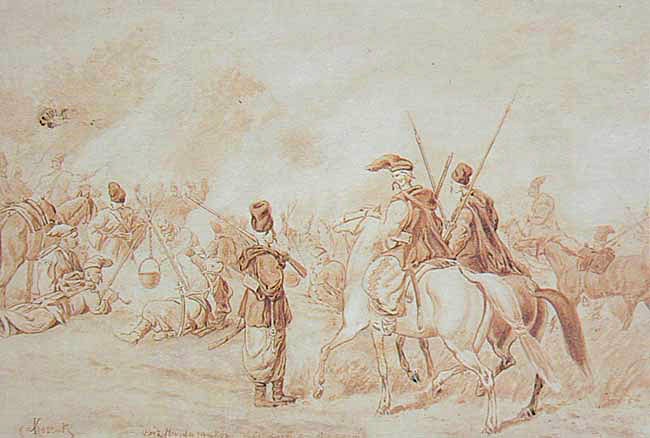Haidamaka
Haidamaka. A participant in spontaneous, popular uprisings against the Polish regime in Right-Bank Ukraine in the 18th century. The term's origin is Turkish (hajdemak, ‘to pursue’); it signifies a restless, rebellious individual. The Balkan Slavs have a corresponding term—hajduk. The Galician Ukrainian equivalent is opryshok. Haidamakas were recruited from among dissatisfied peasants, fugitive serfs, hired laborers, and even artisans and burghers. They formed detachments or bands under the leadership of chieftains, often from the ranks of Zaporozhian Cossacks, who collaborated to organize large-scale rebellions known as the haidamaka uprisings. The earliest information about haidamakas comes from 1708, when rebels led by H. Pashchenko were active in Volhynia; by 1712 they had extended their operations to Podilia and the Bratslav region and Kyiv region. The term was first used in a document dated 22 February 1717. The largest and bloodiest of the haidamaka uprisings was the Koliivshchyna rebellion of 1768.
[This article originally appeared in the Encyclopedia of Ukraine, vol. 2 (1989).]
.jpg)
.jpg)
.jpg)
